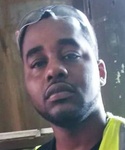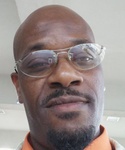Following a deadly 2016 that saw nearly 800 homicides in the city, the Chicago Police Department has announced plans to reduce the violence in the new year.

Chicago Police Supt. Eddie Johnson | Sun-Times file photo by Ashlee Rezin
Last year, five police districts on the South and West sides accounted for the 65 percent increase in murders, according to a statement from CPD spokesman Anthony Guglielmi. There were at least 780 homicides in the city last year, according to Chicago Sun-Times records.
The majority of violence was not random, as more than 80 percent of shooting victims were identified by police as likely to be involved in gun violence, he said. Attacks on officers also nearly doubled last year, which Guglielmi said falls in line with statistics from the rest of the country.
Five districts on the North and Northwest sides saw declines in murder or remained the same, police said.
And officers were able to recover about 8,300 guns, a 20 percent increase from 2015.
“CPD took more bad guys with guns off the street in 2016 than we did in 2015,” Supt. Eddie Johnson said at a press conference.
Some of the 2017 initiatives focus on hiring additional officers, funding economic growth, and providing support for young men in violent neighborhoods, police said.
By the end of the year, nearly 1,000 more beat officers, detectives, lieutenants, sergeants, field training officers and other personnel will be working for the police department. The mayor will invest in mentoring programs for men in the 20 most violent neighborhoods; and offer incentives for commercial retail and industrial developers. The mayor will also financially support the Neighborhood Opportunity Fund and Community Catalyst Fund, police said.
Another important focus will be working with state legislators on a bill to increase sentencing for repeat gun offenders.
Police call that a “key factor” in reducing Chicago’s violence. They hope by creating a culture of accountability, people might be deterred from violence. They are also working with the Cook County State’s Attorney’s office to strengthen how gun cases are investigated and prosecuted.
Johnson said “CPD can’t do it solely on its own, no one can.” But he added that, “anybody in Chicago who’s a leader—anybody—if you think 700 murders last year is OK, then you shouldn’t be a leader. You shouldn’t be. It’s not OK.”
“If you give us the tools that we need to hold these individuals accountable, I promise you 2017 will be a much better, and safer, year for the city of Chicago,” Johnson said.
In the coming year, Chicago Police will also emphasize technology, training and transparency in the department, police said. By the end of the year, officers from all districts will wear body cameras. Gunshot detection systems are set to be expanded in District 7 and 11; and in the same area, more than 44 street cameras were installed this past year.
More than 2,400 officers were trained in crisis intervention, and learned skills to best help people with mental illness, or in trauma and crisis situations, police said. As a result, those officers were able to respond to 13,258 incidents through October.
For the first time, a revised use of force policy focused on the sanctity of life and was released for public comment, police said. The Community Policing Advisory Panel was a strategic effort to increase community-based policing and gain the trust of residents. A few months into 2017, CPAP will make recommendations for a revised community policing strategy.
“The violence in 2016 was driven by emboldened offenders who acted without a fear of penalty from the criminal justice system,” Johnson said in his own statement.
“The challenge we face as a city is serious, and like other cities it is significant. We will be adding to our police department, we are committed to partnering with residents, we will benefit from the investments being made by the mayor, and if we come together and work together, I know we can turn the tide in 2017.”
—Chicago Sun-Times Wire






